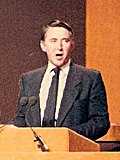| |||||||||||||||||||||||||||||||||
All 39 non-metropolitan counties, 1 sui generis authority, all 26 Northern Irish districts and all 8 Welsh counties | |||||||||||||||||||||||||||||||||
|---|---|---|---|---|---|---|---|---|---|---|---|---|---|---|---|---|---|---|---|---|---|---|---|---|---|---|---|---|---|---|---|---|---|
| |||||||||||||||||||||||||||||||||
 Colours denote the winning party, as shown in the main table of results. | |||||||||||||||||||||||||||||||||
The 1985 United Kingdom local elections were held on Thursday 2 May 1985 in England and Wales, and Wednesday 15 May 1985 in Northern Ireland. [1] [2] [3] [4] Labour had the largest share of the vote in local council elections for the first time since 1981.
Contents
- Results
- England
- Non-metropolitan county councils
- Sui generis
- Northern Ireland
- Wales
- County councils
- References
- External links
Both Conservatives and Labour lost some seats to the Liberal-SDP Alliance, who were rebuilding with the SDP under the leadership of David Owen and enjoying strong showings — including a brief lead — in the opinion polls.



